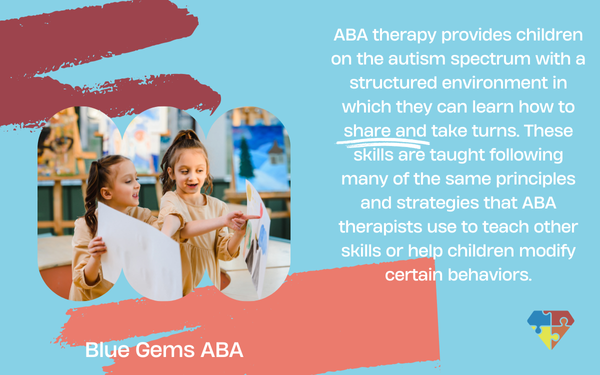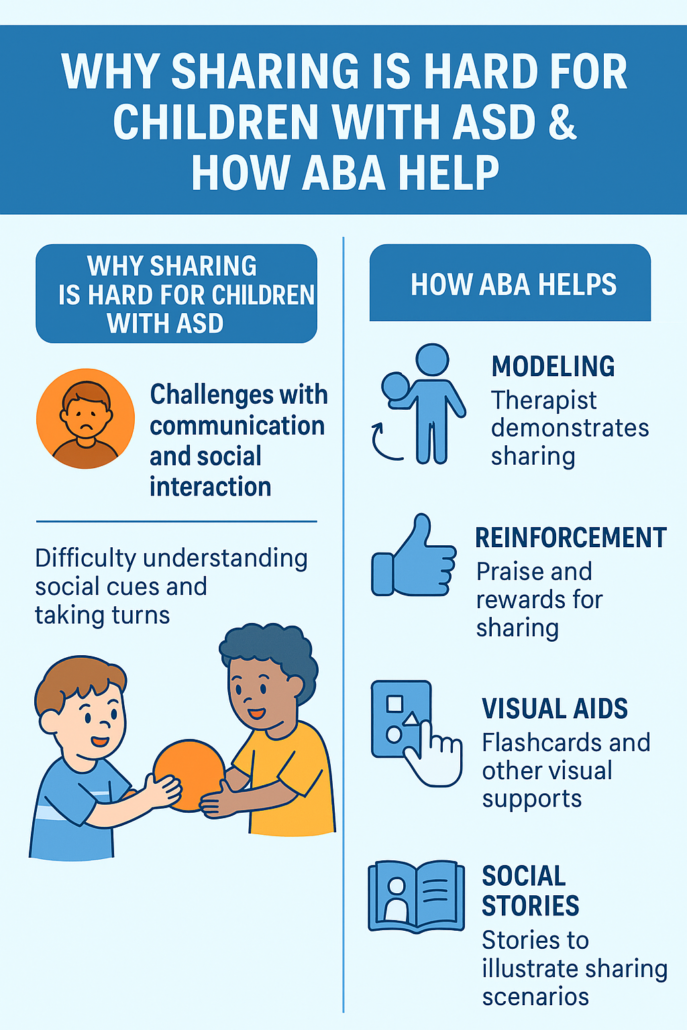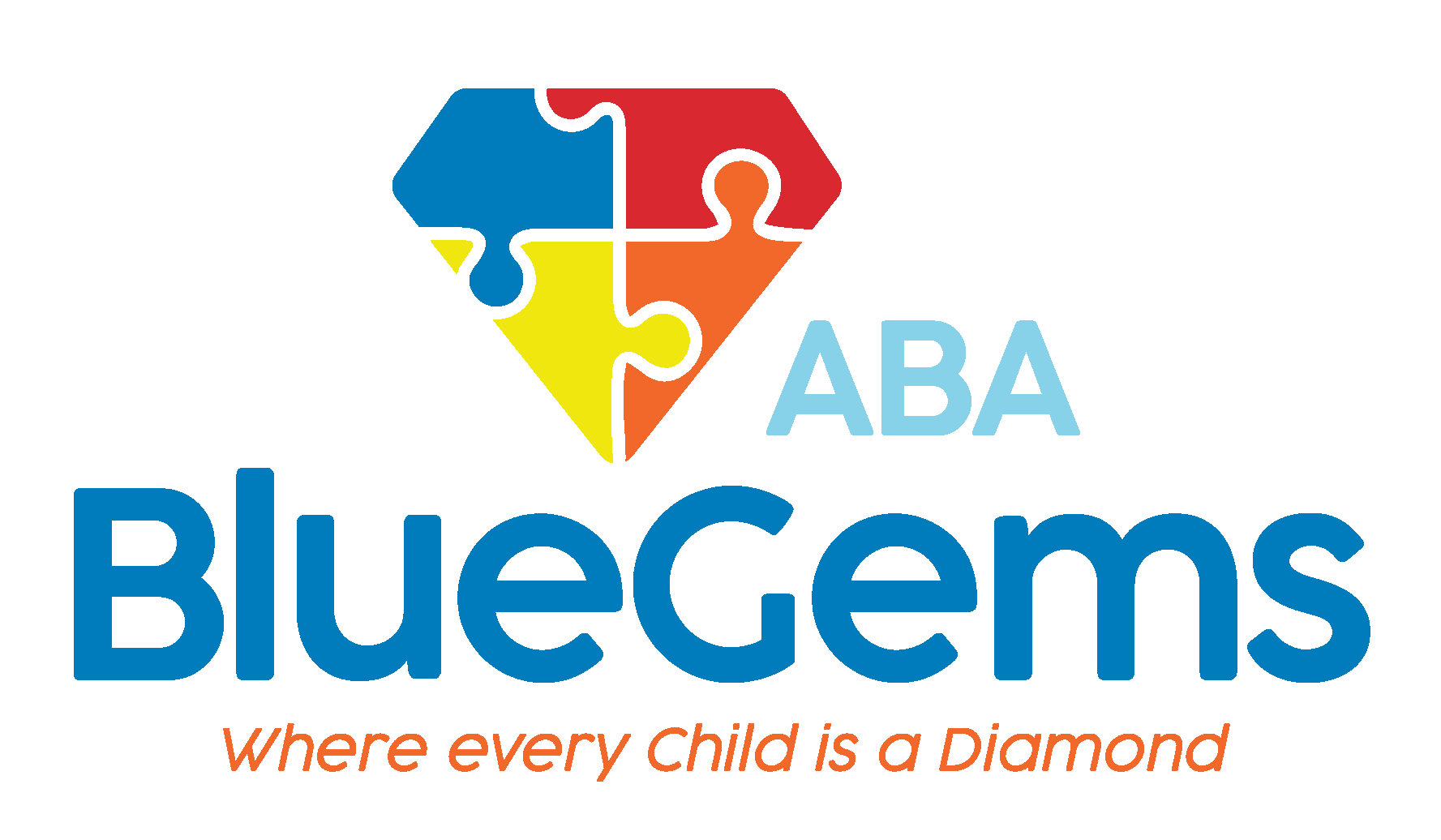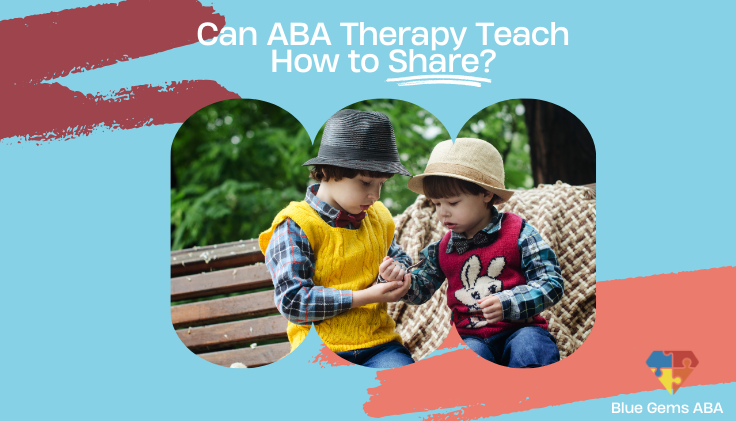Can ABA Therapy Teach How to Share?
There are skills that children learn from a young age that have a profound impact on the rest of their lives. Something as simple as learning to share and take turns can have monumental effects on developing meaningful relationships and working in groups, for example, both of which deeply apply to someone’s personal and professional future.
These skills take time to teach to young children, and there are many hiccups along the way, as they are not necessarily easy concepts for young children to grasp. Unfortunately, the concept of sharing and taking turns can be even more challenging for children with autism spectrum disorder (ASD).
As such, it may be harder for them to learn how to share and take turns, which can then impact how they form social relationships and do other things in life.
Luckily, sharing and turn taking can be taught through applied behavior analysis. Below, we’ll discuss how ABA therapy approaches teaching children with ASD how to share.
Table Of Contents
Why is Sharing Important?
Sharing is an extremely important skill for people to learn. As mentioned before, sharing and turn taking are essential components of working with others and engaging in social situations.
When children learn how to take turns and share, they improve their communication skills and form better relationships with their peers. This allows them to engage in social scenarios more fully and to cultivate skills such as impulse control and patience.
All of these skills will help them to build familiar interactions and enhance educational experiences. In the long run, they’ll be better prepared to have harmonious and rewarding social experiences.
And these social experiences have a big impact on their educational and professional future as well.
Why Do Children with ASD Have Trouble Learning How to Share?
Autism affects individuals in many different ways, but two of the most common challenges they face are with communication and social interaction. The deficits they may have with social communication, for instance, might hinder how they engage with their peers, which can stand in the way of their ability to even understand the concept of sharing and taking turns.
Children with autism may not completely understand normal social cues or how conversations typically flow. This can cause further problems with taking turns and sharing.
It’s very important that children with autism are taught these skills, though, as it can help to reduce stress that they may feel in social interactions. By learning how to share and take turns, they can improve their social interactions with others, which can help them build confidence in themselves.
How Can ABA Therapy Teach Children with ASD to Share?
ABA therapy provides children on the autism spectrum with a structured environment in which they can learn how to share and take turns. These skills are taught following many of the same principles and strategies that ABA therapists use to teach other skills or help children modify certain behaviors.

As with any other targeted skill, the ABA therapy team will create a plan and goals for the child in relation to sharing and turn taking, and then structure an approach and reinforcement schedule to encourage engagement and learning.
Many times, this will be done in a play-based setting. For example, therapists can use simple objects and toys to show what sharing is and to teach it.
They can use building blocks to show how one person puts one block down, then the other person puts the next block on top. They can roll a ball back and forth to teach the basic concept of taking turns.
Through all of this, the therapist will be modeling the behaviors that they wish the child to exhibit, which is a crucial ABA therapy strategy.
In addition, they will be incorporating positive reinforcement to encourage the child to continue exhibiting those behaviors. This might include giving extra praise when the child takes turns and shares, or rewarding them with extra time to play with the ball they were just passed on their own.
Therapists will also commonly use visual aids to help teach these vital skills. Flash cards or even hand gestures such as pointing can go a long way in helping children with autism understand what’s expected of them, since they tend to be visual thinkers.
They also might use social stories to show children how they can apply sharing and turn taking to real-world scenarios, which makes these skills much more applicable and relatable.

Blue Gems ABA Teaches Children with ASD How to Share
Sharing may seem simple, but it’s an essential skill that all children must learn to effectively navigate social interactions. This skill may be challenging for children with ASD to learn, but it can be taught effectively through ABA therapy.
At Blue Gems ABA, we effectively teach children with autism how to share and take turns by following the various principles and strategies of ABA therapy. By customizing the approach and delivery of the treatment to each individual child’s unique strengths, challenges and preferences, we can help them build this essential skill and so much more.
To learn more, please contact us today.




